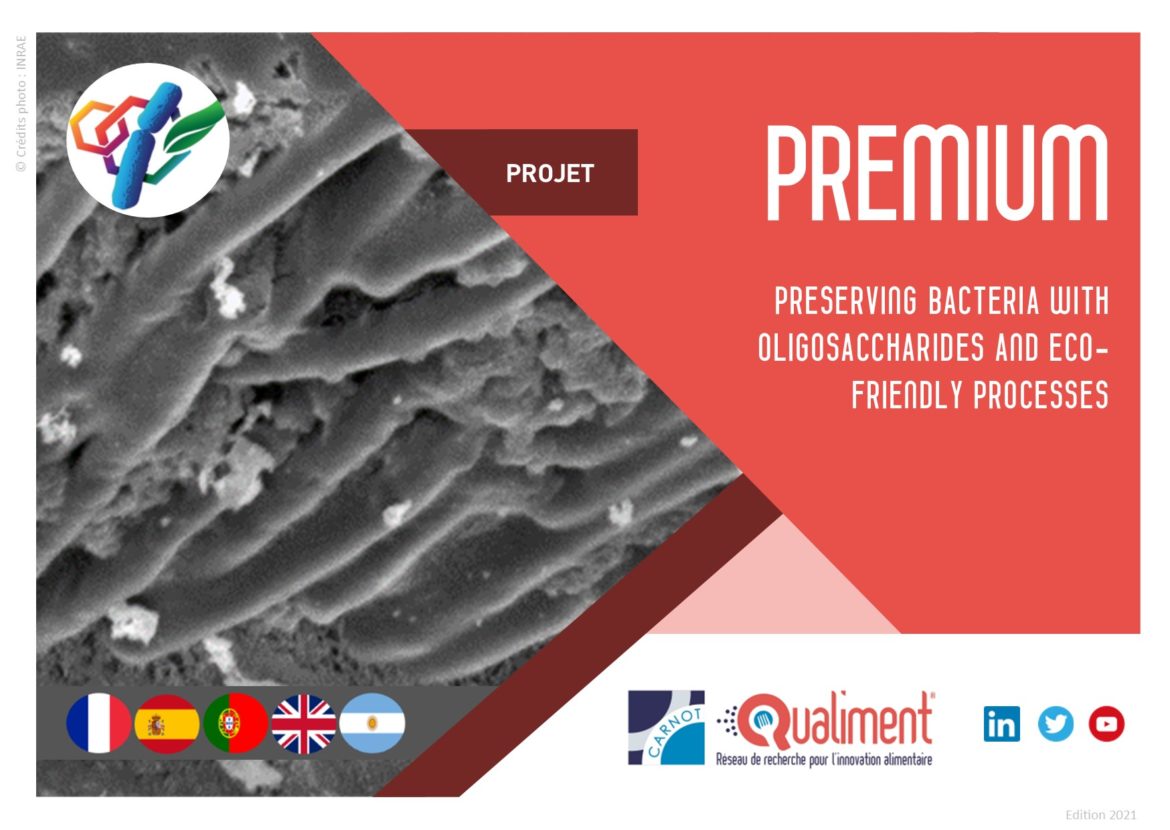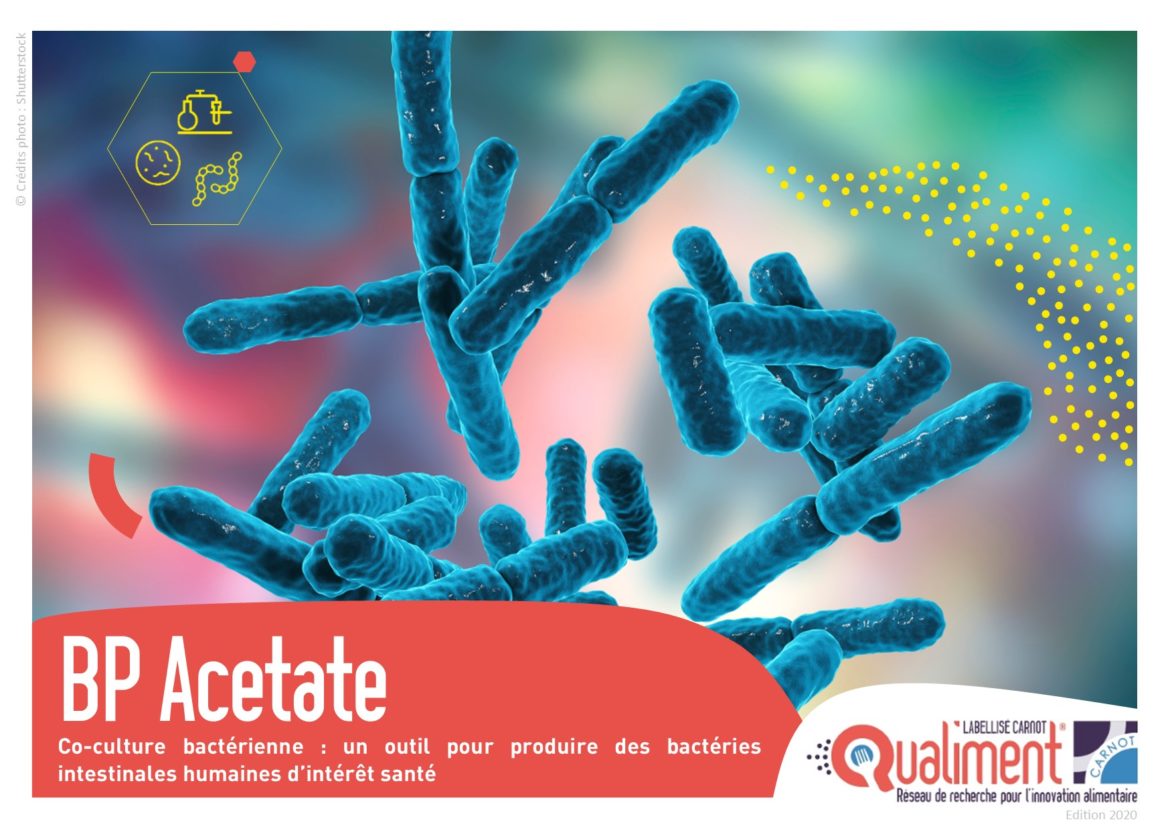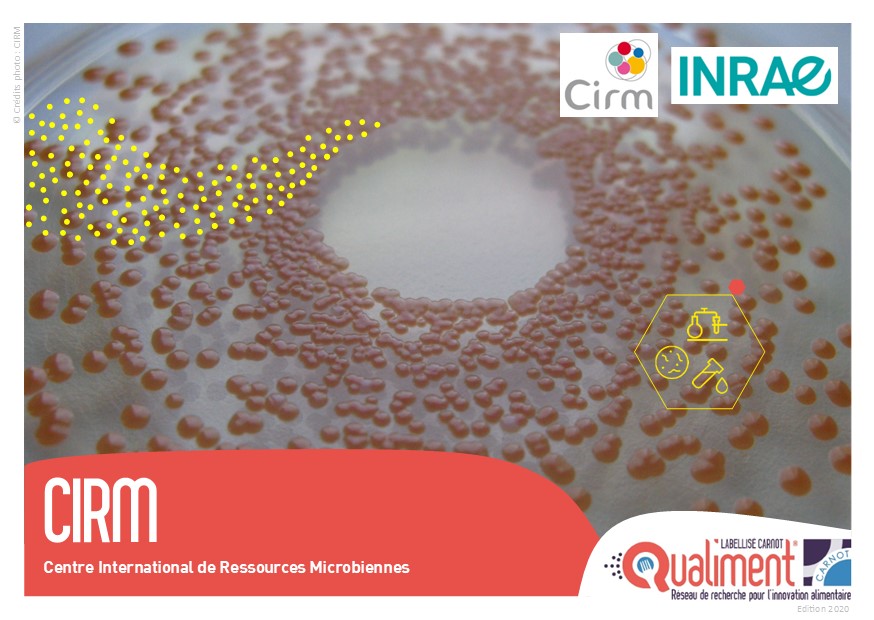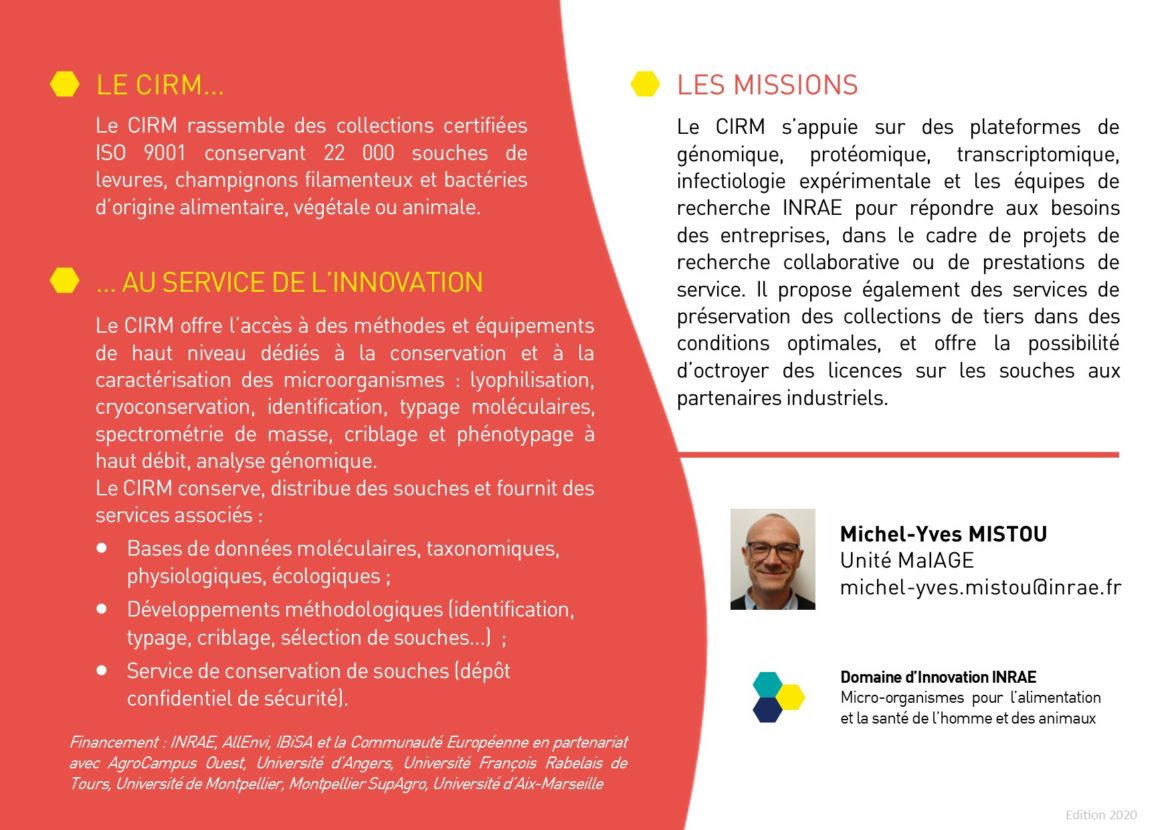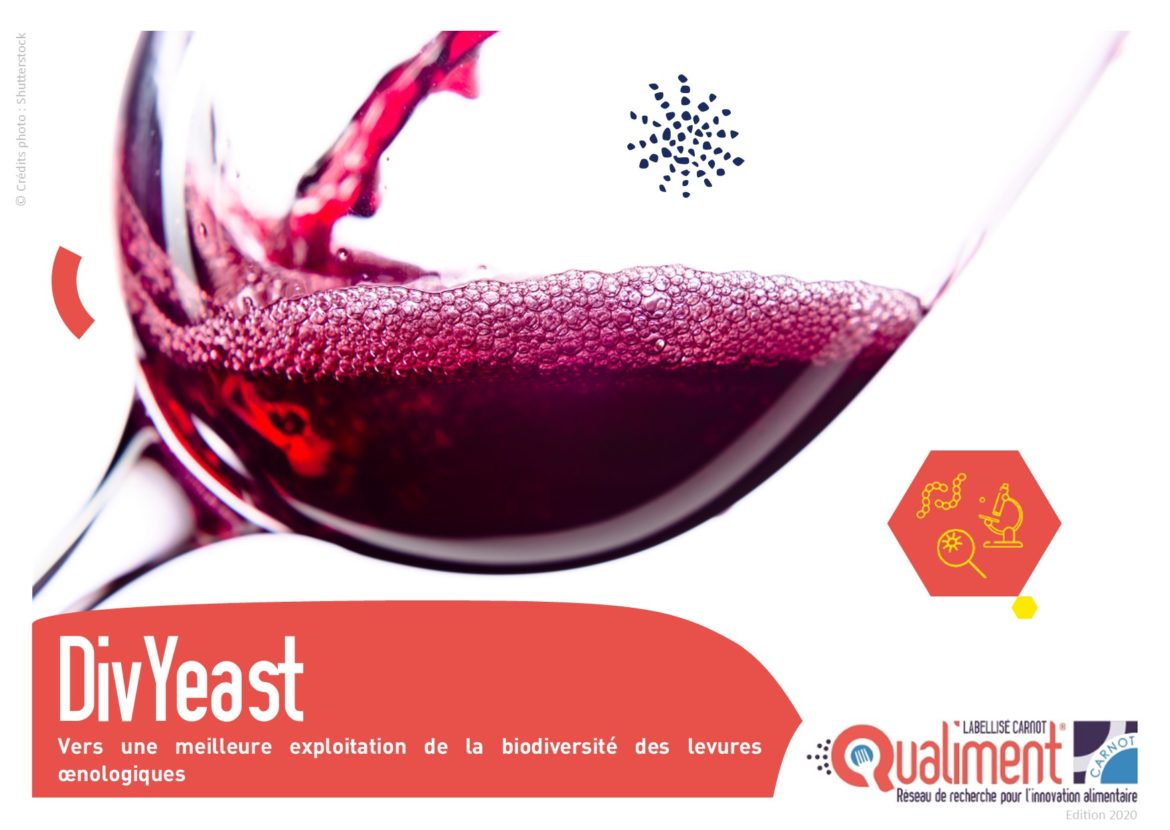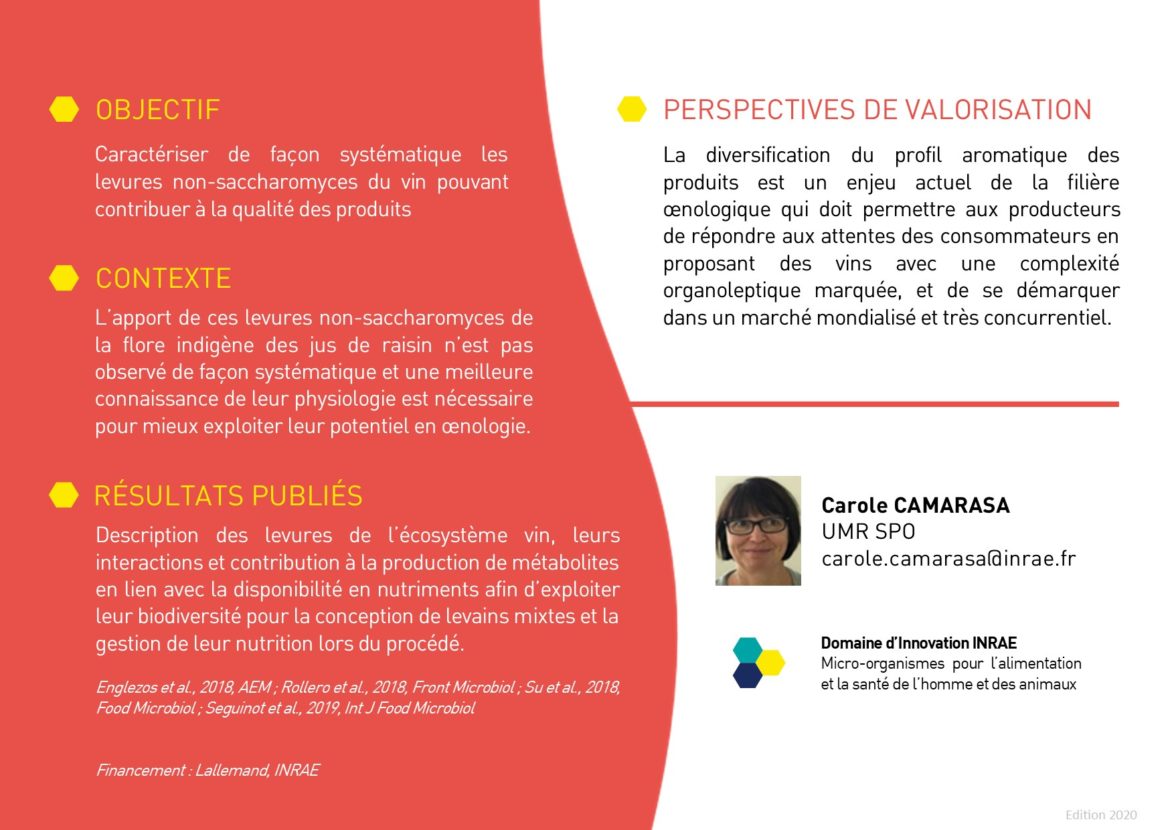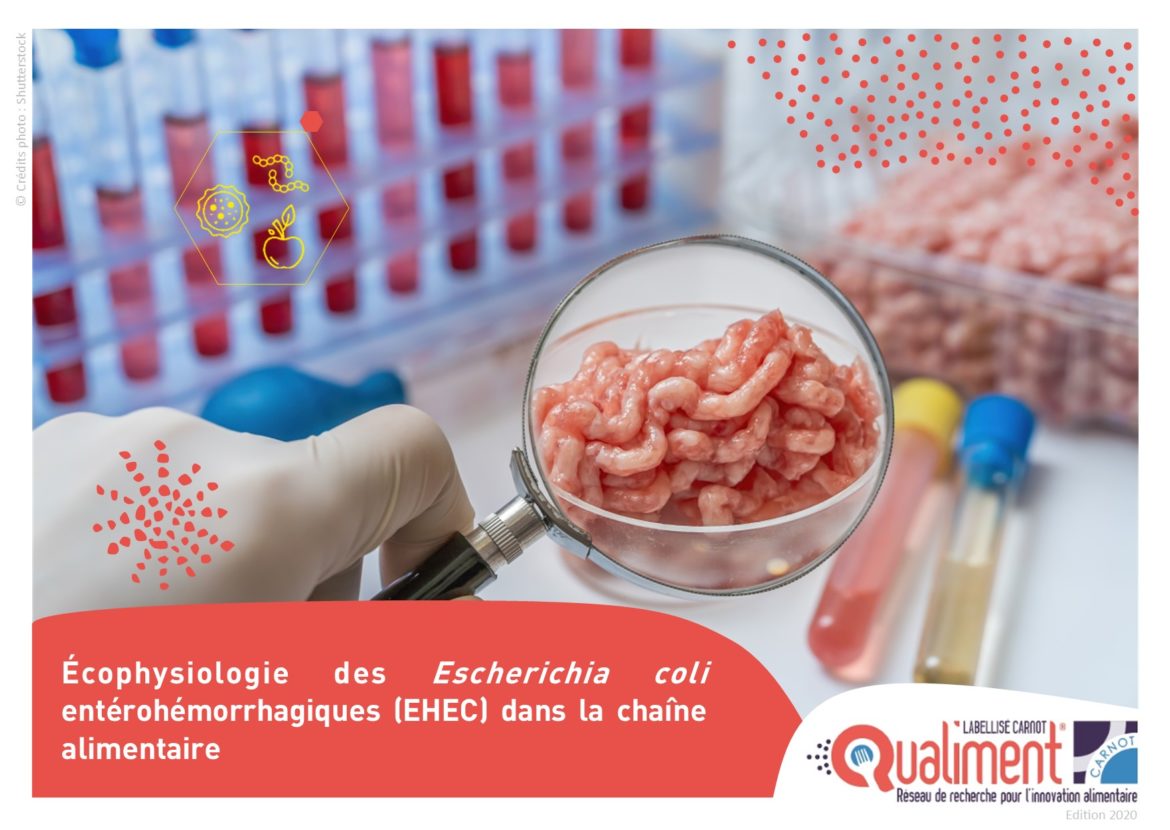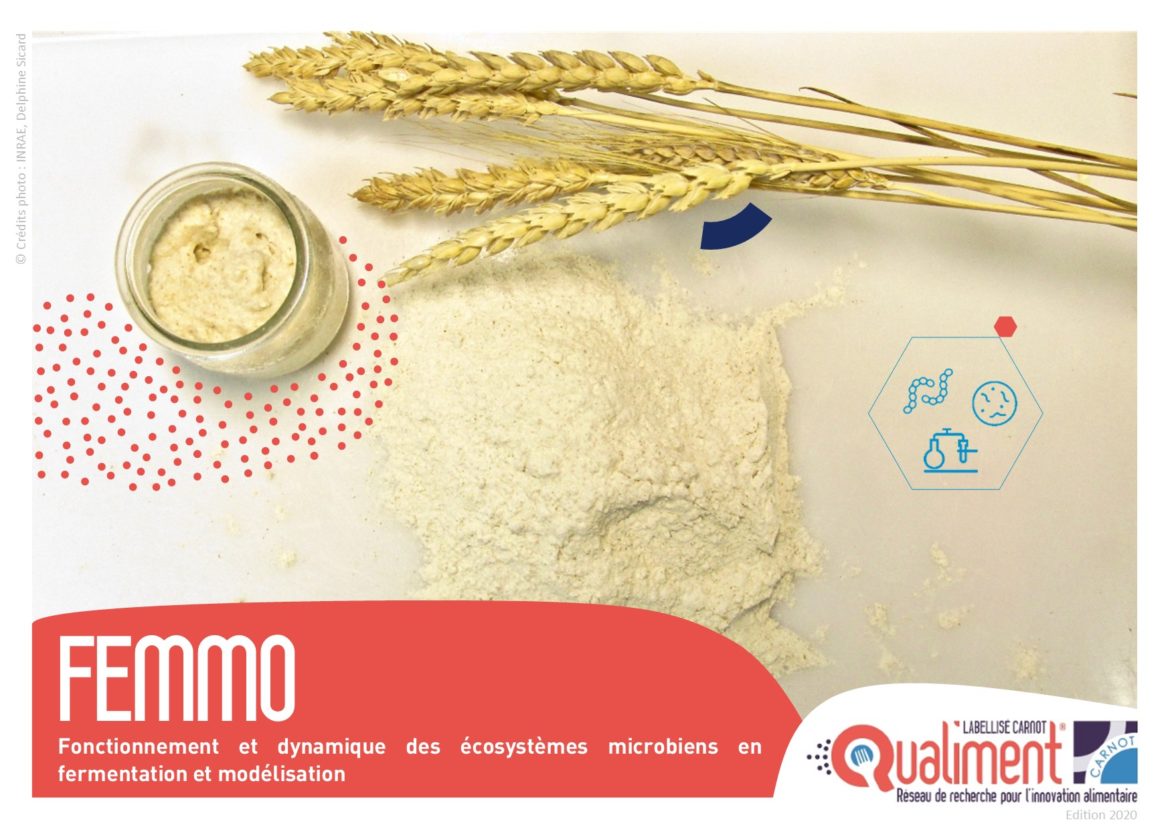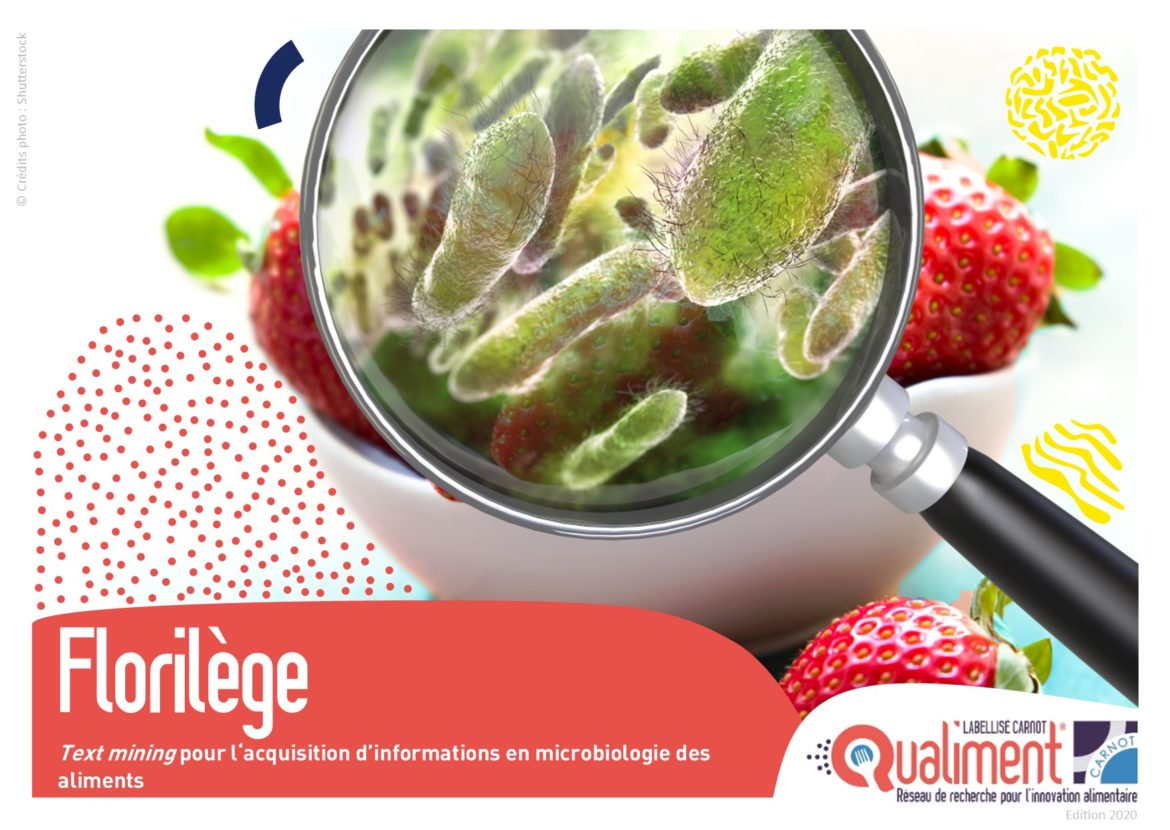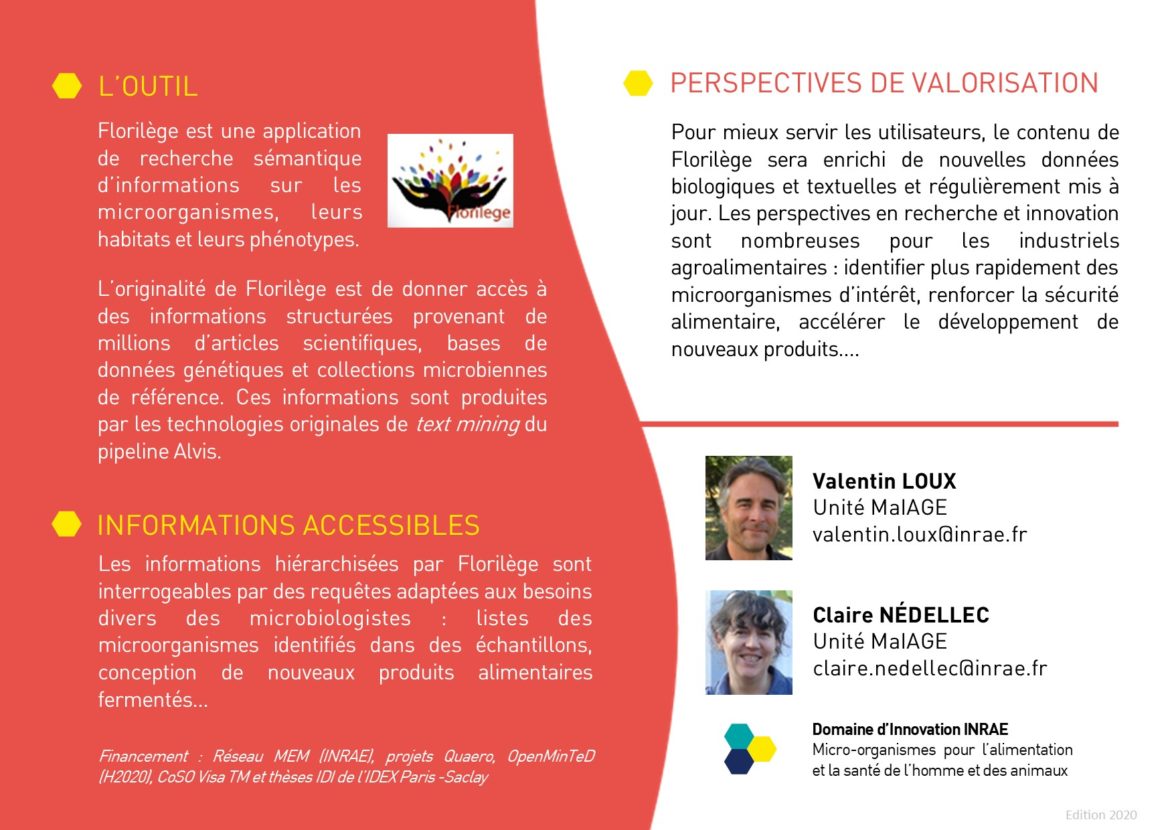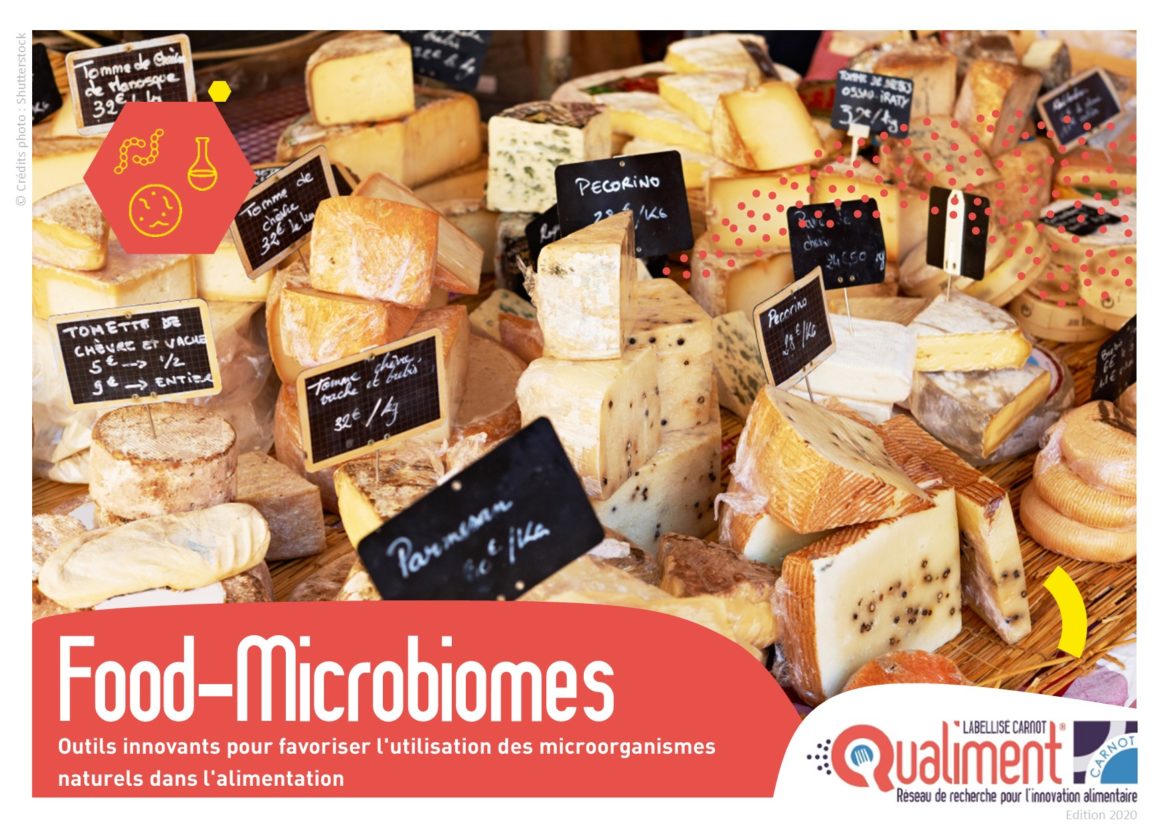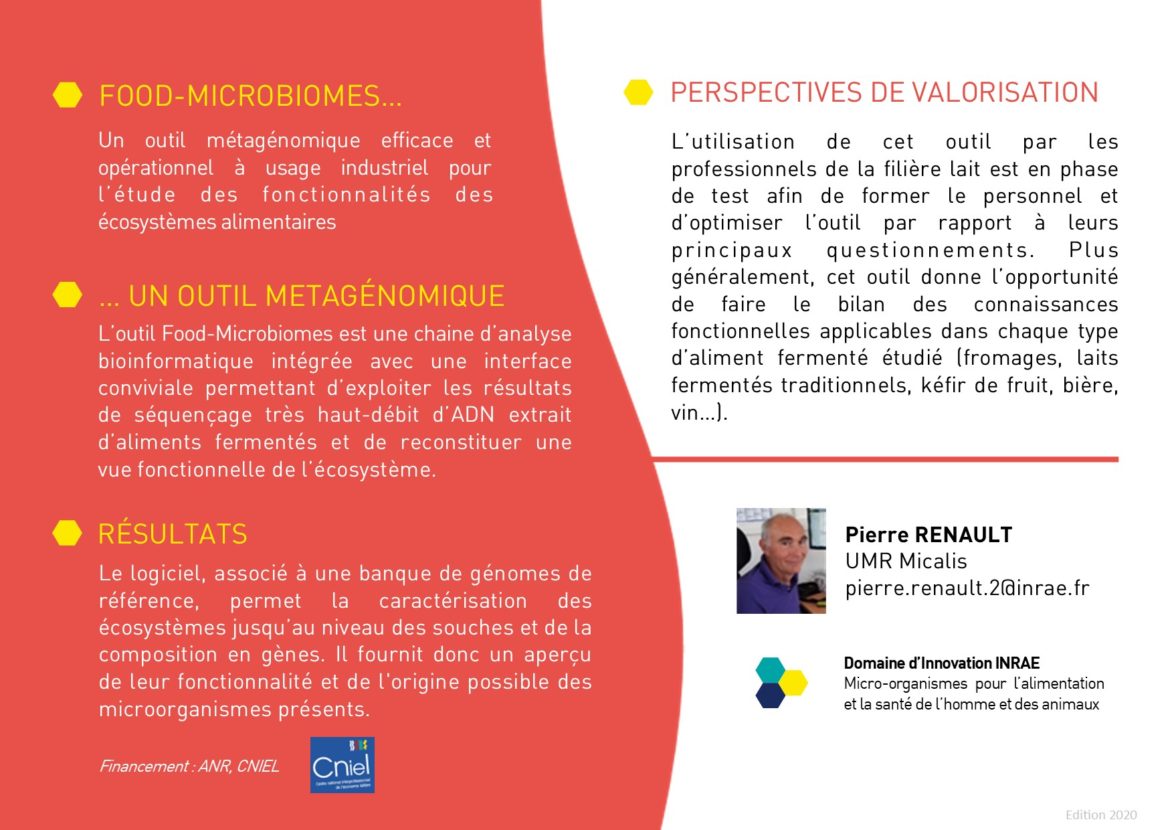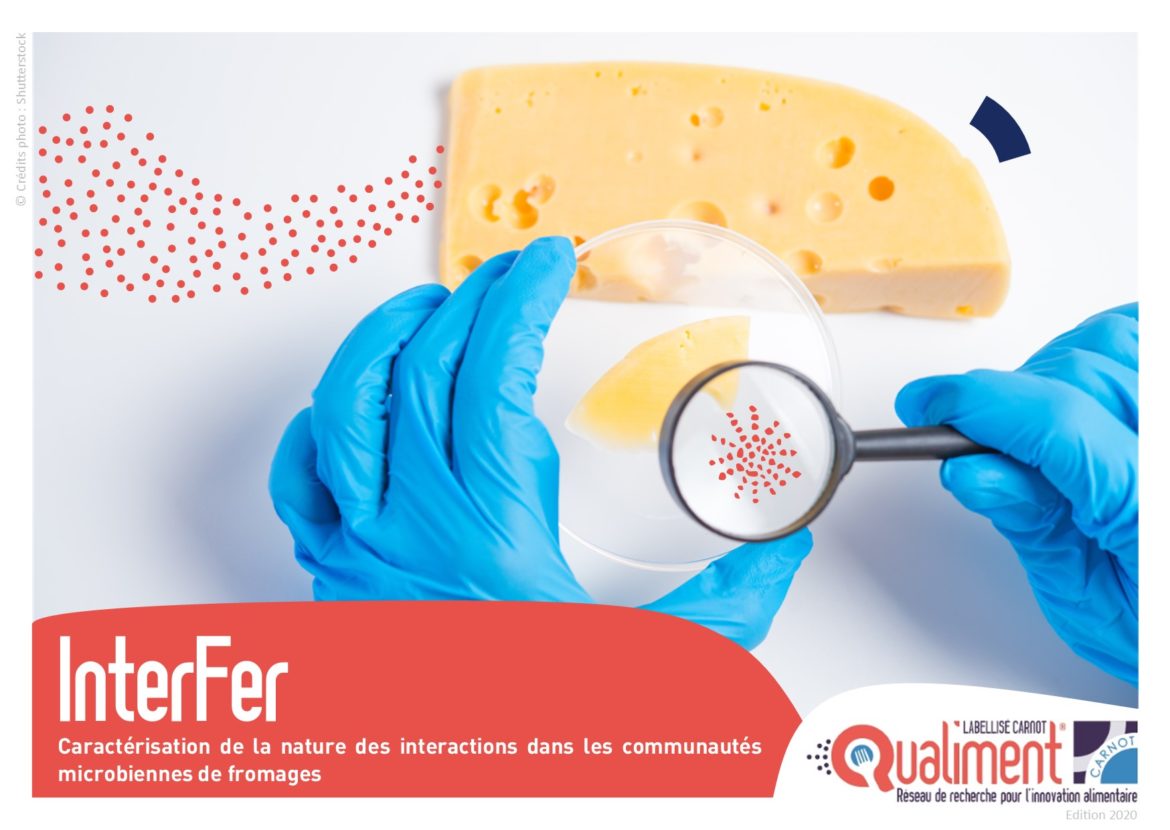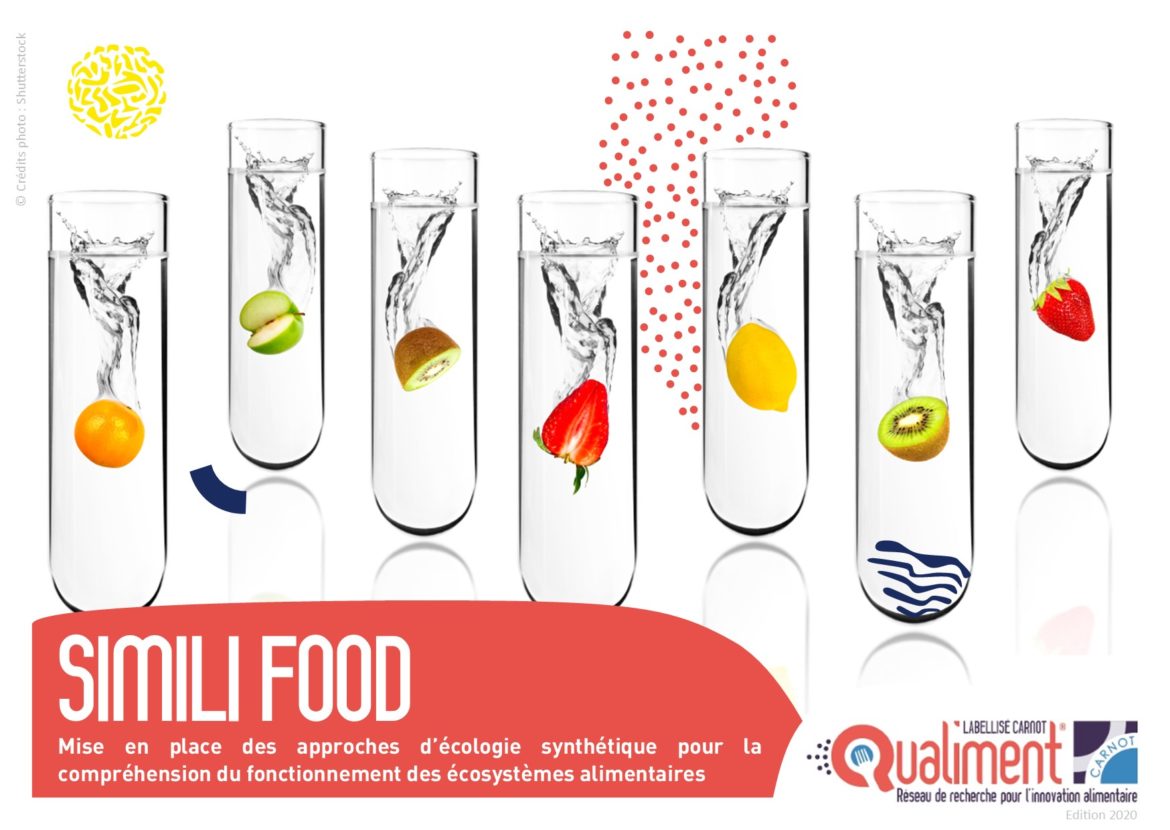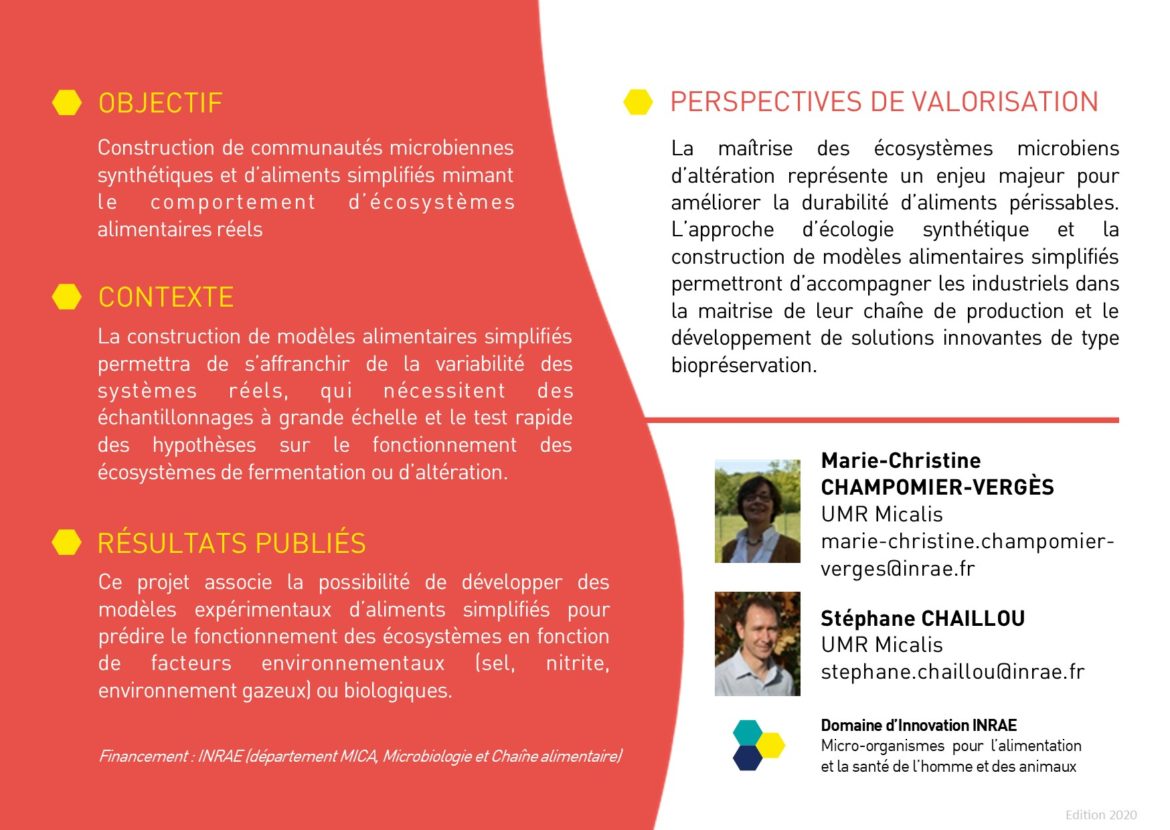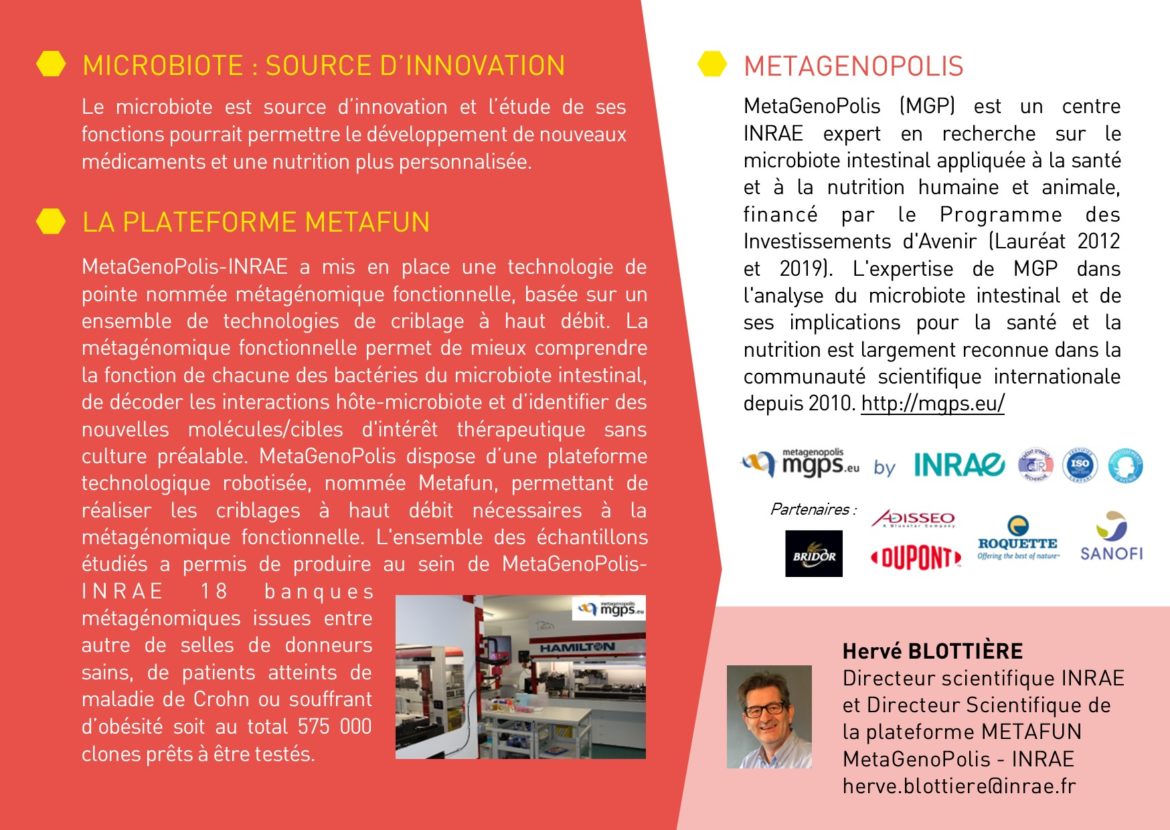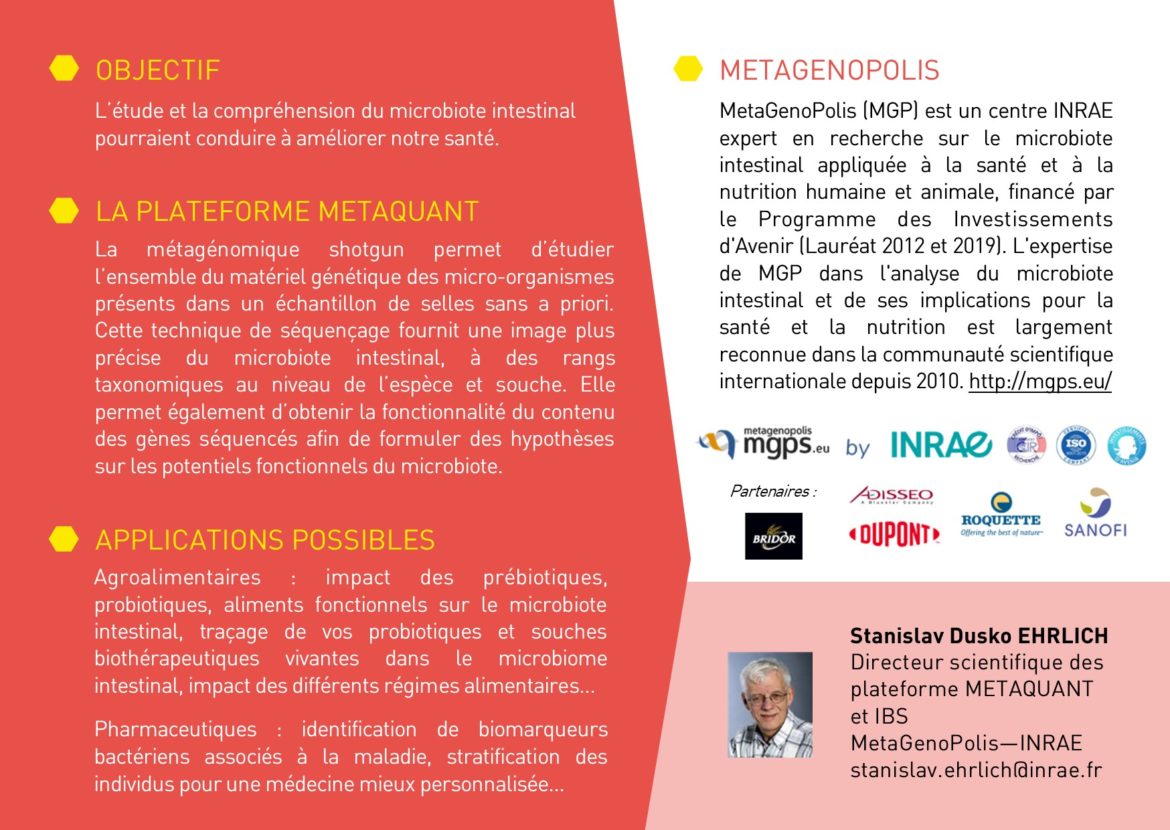Microorganisms for food and health

Context and challenges for business innovation
Fermented foods and functional foods containing probiotic microorganisms represent two fast-growing markets that correspond well to the current societal demand for a more natural diet and pharmacopoeia.
Carnot's contributions to accompany them in their evolution
Qualiment®'s expertise allows us to select, produce, preserve, store and rationally use the microorganisms that carry out these functions (acidification, bacteriocin production, flavouring, texturizing for food ferments and preventive properties of chronic diseases, anti-inflammatory, satiety, digestibility improvement for the pharmaceutical industry).
This competence applies to aerobic or facultative anaerobic microorganisms (bacteria, archaea, yeasts, filamentous fungi) found in fermented foods but also to strictly anaerobic commensals of the human intestine. Moreover, the constitution of microbial communities is also considered in this functional objective.
Areas of expertise

Background to date
With about 2kg of microbes in and on us, humans rely on a human-microbial symbiosis that is built from birth and whose homeostasis is essential to maintain health and well-being. Resulting from a long co-evolution that preceded the advent of the Homo genus on the planet, this symbiosis has been put to the test through only a few generations that have seen the incidence of chronic diseases increase significantly at the same time. The nutritional transition and exposure to dietary and environmental xenobiotics, as well as changes in perinatal care, may have impacted the host-microbe symbiosis. The major pathologies of modern societies, which are now recognized as diseases of the symbiosis, are characterized by the concomitant alteration of the microbiota (loss of diversity, loss of symbionts and proliferation of pathobionts) and of host parameters (intestinal permeability, inflammation, oxidative stress). The altered symbiosis would thus potentially be a stable state resulting from a rupture of the harmonious dialogue between the host and its microbes and maintained in a vicious circle by negative feedback loops. It is therefore necessary to act to prevent or restore symbiosis, through innovative approaches that could include a new functional nutrition.
Challenges for business innovation
The virtues attributed today to microbiota, and in particular to the intestinal microbiota, are of growing interest to the agri-food and pharmaceutical sectors. Nevertheless, there are still many grey areas regarding host-microbiota interactions and the impact of food on the microbiota, which is why a better understanding of these mechanisms is necessary in order to pave the way for promising products of the future.
Carnot's contributions to accompany them in their evolution
Qualiment®'s research focuses on the study of host-microbe interactions and on the implication of human microbiota on health. This work allows us to bring to the food, ingredients and health industries, the means to identify new targets or therapeutic candidates and to develop new nutritional or clinical approaches.
Qualiment® has all the innovative analytical techniques necessary to study these microbiota and their interactions with the host such as quantitative and functional metagenomics, metabolomics and metaproteomics approaches combined with bioinformatics tools. Qualiment® also has a large panel of innovative in vitro models and animals, notably axenic (mice, rats, birds) for preclinical studies.

Background to date
According to the WHO definition, probiotics are living microorganisms which, when administered in sufficient quantities, have beneficial effects on health. Probiotics can be found naturally in food, but they are also marketed today in the form of food supplements or medicines.
Prebiotics are food ingredients, often oligosaccharides, that affect the host in a beneficial way by stimulating the growth and/or activity of bacteria in the intestinal microbiota.
Challenges for business innovation
The knowledge on the microbiota and its impact on health supports the interest of the health and food industries for probiotics and prebiotics. In particular, the so-called second-generation probiotics derived from human microbiota are generating a lot of hope and interest for their health effects. Moreover, the action of prebiotics is now being revisited in depth in the light of new knowledge and methods for exploring the intestinal microbiota.
Carnot's contributions to accompany them in their evolution
Qualiment® laboratories have the expertise to decipher the mechanisms of action of probiotics, to study their interactions with the host, and to evaluate their effects on health.

Background to date
The use of ferments is attracting more and more agri-food companies, due to their functional and nutritional interest, and their potential for innovation. Therefore, the production and preservation of ferments are strong current issues to support the development of innovative products, and appreciated by consumers.
Challenges for business innovation
In order to embrace the full potential of ferments and to develop new, original and attractive products for consumers, the agri-food sector is seeking to develop the scientific basis related to ferments throughout their value chain, particularly around their production and preservation.
Carnot's contributions to accompany them in their evolution
Qualiment®'s teams have extensive experience in optimizing the production and preservation of bacteria, including food bacteria, strict anaerobic bacteria (such as Faecalibacterium) and other commensal bacteria that are difficult to cultivate and preserve.
Beyond the study of these complex microorganisms, Qualiment® researchers have the skills to analyze the impacts of gas atmosphere modification on the properties of microorganisms and their reactions to stress.

Background to date
Biopreservation is the use of bacteria or their metabolites to improve the microbiological quality of food or extend their shelf life. The bacteria used must not modify the organoleptic qualities of the products but fight, by different mechanisms, against undesirable bacteria.
Challenges for business innovation
In response to the globalization of the agri-food market, the introduction of new foods, and the demand for low-processed products with high quality and a longer shelf life, biopreservation is a preservation method of choice. It allows to improve the shelf life of foods by maintaining a high quality and an associated hygienic status while limiting nutritional and organoleptic losses.
In this context, biopreservation could appear as a way to compensate for the decrease of some preservatives such as nitrite or salt in cured products.
Carnot's contributions to accompany them in their evolution
The expertise and collections of microorganisms of Qualiment® members allow the design and validation of strains or consortia of strains used for biopreservation of foods, for example for meat foods.

Background to date
The microbiological safety of food is both a prerequisite for its consumption and an essential determinant of the methods of stabilization, conservation and preparation. Knowing which microorganisms are likely to be present, to grow and to produce toxins allows to choose the scales to be applied as well as the conditions and duration of storage before consumption.
Challenges for business innovation
The requirement of microbiological safety is a major lock for any food innovation. Any food product must be healthy and safe, and this requirement is reflected in the specifications of the ingredients and the calculation of the intensity of the stabilization processes to be used.
Carnot's contributions to accompany them in their evolution
The Carnot Qualiment® can assist food companies in the quantification of microbiological risks in their products, from the study of risks by a predictive microbiology approach, the realization of line audits or challenge tests, up to specific follow-ups, in particular concerning spore-forming bacteria, whether they are pathogenic such as Bacillus cereus or contamination bacteria (highly thermoresistant thermophilic bacteria), with the identification of the conditions of sporulation, germination and regrowth, and the proposal of processes (pasteurization, sterilization, pascalisation, pulsed light, etc. ) allowing their inactivation or elimination.

Background to date
Fermentation has been used for thousands of years to preserve food. Beyond its ecological aspect, it represents an economical way to preserve food and to fight against food waste. Fermentation also allows to improve the quality of food by facilitating their digestibility and by increasing their organoleptic qualities.
Challenges for business innovation
There is currently a worldwide revival of interest in fermented products, linked to the scientific results of the last few years demonstrating the effects of certain probiotic microorganisms on health. The modulation of the microbiota by the ingestion of probiotics or products containing probiotics to prevent pathologies such as obesity, type 2 diabetes, irritable bowel syndrome, or depression, is a serious possibility. Fermented foods can therefore be a beneficial element for the good balance of the microbiota.
Carnot's contributions to accompany them in their evolution
Through their large collections of available microorganisms, their technological halls, and their detailed knowledge of the ecosystems involved, Qualiment® teams have key assets to help manufacturers develop innovative fermented products.

Background to date
Bacteria in transit in our digestive tract have an impact on key factors of our health: immunity, inflammation, digestion, motility, sensitivity and permeability of the intestine, etc. Some selected probiotic microorganisms may have a beneficial effect on one of these key parameters, but have no recognized techno-functional potential. Conversely, we consume many bacteria in our fermented foods, selected for their techno-functional properties, but which have no recognized bio-functional potential.
Challenges for business innovation
Ferments are of growing interest to the food industry, both for the functions they bring to food, but also, and this is a growing topic of interest, for the health benefits they could bring. Understanding, developing and exploiting this dual functionality is therefore a major challenge for the sector.
Carnot's contributions to accompany them in their evolution
Therefore, the challenge for Qualiment® is to identify bacteria that possess both techno-functional properties (sourdough) and bio-functional properties (probiotics) to direct fermentations towards probiotic fermented foods meeting the needs of target populations.


